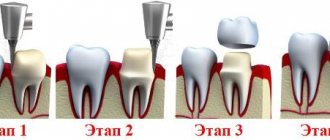The choice of drug therapy during pregnancy is extremely important. After all, the list of contraindications in the annotation for any drug almost always begins with the words “do not use during pregnancy and lactation.” However, both pregnant and breastfeeding women can get sick. Or even suffer from chronic diseases. How to be?
“How often do pregnant women take medications? According to WHO, more than 90% of women take some kind of medication during pregnancy. Most often during pregnancy, vitamins specially designed for pregnant women are prescribed, followed by multivitamins, antimicrobial agents, analgesics, dermatological drugs, anti-asthma and anticonvulsants,” says Ekaterina Efimkova, PhD, leading researcher at MONIIAG, doctor highest category .
What should you remember before using medications during pregnancy? Any pharmacological drug can have an effect on the fetus, and therefore pharmacotherapy for a pregnant woman must be strictly and clearly justified. It has been established that 1/3 of newborns experience adverse reactions to the treatment of their mothers during pregnancy, the specialist explains.
Until the early 40s of the last century, it was assumed that congenital malformations were a hereditary pathology, but after a connection was established in 1961 between taking one of the sedatives during pregnancy with the occurrence of malformations of the limbs in the fetus, the possibility became obvious penetration of drugs through the placenta and their teratogenic (damaging) effect on the development of organs and tissues.
Plate for two. Five important rules for the daily diet of expectant mothers Read more
How is therapy selected for pregnant women?
When prescribing medications during pregnancy, they are guided by the following principles::
- any drug is used according to indications and exclusively according to the prescription of the attending physician;
- when choosing medications, preference is given to those that have proven effectiveness;
- Monotherapy is preferable, that is, prescribing, if possible, one drug instead of several;
- local treatment is preferable to systemic treatment (i.e. droppers, injections, tablets are prescribed as a last resort);
- Dietary supplements, herbal remedies and similar products are used only after consultation with a doctor.
“The 1st trimester of pregnancy is a particularly dangerous period for taking medications. It is at this time that the formation of organs and systems of the fetus occurs, which then continue to form and develop throughout the 2nd and 3rd trimesters. To indicate the potential risk of drugs to the fetus, the FDA classification is more often used, where labeling A means no risk; B - no evidence of risk; C - risk is not excluded; D—risk proven; X - drugs are contraindicated during pregnancy,” warns Efimkova.
During pregnancy, women may experience acute diseases and various conditions that require the use of analgesic and anti-inflammatory drugs, antibiotics, cough and cold remedies, and other drugs of various therapeutic groups. Often, medications from these groups are used as part of self-medication without taking into account contraindications and compliance with the dosage regimen, which increases the risk of undesirable consequences for both the mother and the fetus.
We're on the mend. How many kilograms can you gain during pregnancy? Read more
Fetus in the second trimester of pregnancy
The second trimester begins from the 14th week of pregnancy and lasts until the 28th week. At this time, the formation of the child’s internal organs ends. The baby already has all the organs and systems like an adult: the brain, spine, limbs, subcutaneous adipose tissue and even the papillary pattern on the fingertips - future imprints. The child grows and develops daily, and his internal organs develop along with him.
At week 14, the liver produces bile for the first time, and the pancreas begins to produce the hormone insulin. The activity of the endocrine glands increases. If until this time only her hormones were present in a woman’s body, then in the second trimester they are “supplemented” with the child’s hormones. They are produced by the baby’s maturing thyroid gland, pancreas, and adrenal cortex. For this reason, doctors closely monitor the hormonal levels of the expectant mother.
“If a woman’s body produces insufficient amounts of thyroid or pancreatic hormones, the fetus releases its hormones,” comments obstetrician-gynecologist Evgeniy Petreikov. — Disorders of the thyroid gland in the mother increase the risk of developmental delays in the fetus. If a woman has missed diabetes mellitus, it is not corrected with diet and medications, this increases the load on the child’s pancreas. There is a high probability that the baby will develop diabetes mellitus in the first or second year of life.”
pixabay.com/
Non-narcotic analgesics
During pregnancy, if it is necessary to use analgesics, it is recommended to use small doses (short-term). “Paracetamol and small doses of acetylsalicylic acid are considered relatively safe. Acetylsalicylic acid (the full name of aspirin) is a unique drug, since in addition to analgesic and anti-inflammatory effects (at a dosage of 500 mg), in small doses (75-150 mg) it reduces blood clotting and is now actively used to prevent such a dangerous complication of pregnancy like preeclampsia. When using non-narcotic analgesics in late pregnancy, due to inhibition of prostaglandins, complications are possible in the form of post-term pregnancy, bleeding in the fetus and the pregnant woman, premature closure of the ductus botellus with the formation of pulmonary hypertension (especially often when using indomethacin and voltaren),” says Ekaterina Efimkova. Naturally, in order to prevent any serious problems, you should definitely consult a doctor before taking any medications.
Non-steroidal anti-inflammatory drugs: a great danger during pregnancy
Main
The use of nonsteroidal anti-inflammatory drugs (NSAIDs) during pregnancy leads to rare but serious problems in the unborn baby. NSAIDs are very popular drugs that have analgesic, antipyretic and anti-inflammatory effects. The dangers of NSAIDs for pregnant women have been known for a long time, but now everything has become more than obvious.
According to a statement from the US Food and Drug Administration (FDA), the use of NSAIDs from approximately 20 weeks of pregnancy onwards can cause impaired renal function in the fetus and even kidney failure. Since at this stage of pregnancy the metabolism (production and excretion) of amniotic fluid (amniotic fluid surrounding the fetus in the uterus) is almost completely controlled by the kidneys of the fetus itself, dysfunction of the latter carries the risk of a critical decrease in the amount of this fluid.
The condition, called oligohydramnios, or oligohydramnios, can lead to a number of problems because amniotic fluid is responsible for essential functions necessary for normal growth and development of the fetus. It protects the fetus from trauma to the mother's abdominal cavity, prevents compression of the umbilical cord, has antibacterial properties against infections, serves as a reservoir of fluid and nutrients for the fetus, provides adequate space and growth factors necessary for the normal development of its lungs, musculoskeletal system, gastrointestinal tract.
Oligohydramnios can result in the following serious disorders in the fetus:
List of non-steroidal anti-inflammatory drugs
The list of unsafe NSAIDs mentioned by the American regulator in the context of harm to pregnant women and the fetus includes the following drugs:
- aspirin (aspirin);
- diclofenac;
- diflunisal;
- ibuprofen;
- indomethacin;
- ketoprofen (ketoprofen);
- ketorolac;
- meclofenamate;
- meloxicam;
- mefenamic acid;
- naproxen;
- oxaprozin;
- piroxicam;
- sulindac;
- tolmetin;
- fenoprofen (fenoprofen);
- flurbiprofen;
- celecoxib;
- etodolac.
However, it should be understood that all NSAIDs without exception are considered unsafe for pregnant women and the fetus , since their main mechanism of action is generally the same: NSAIDs inhibit cyclooxygenase (COX), suppressing both isoforms of this enzyme - COX-1 and COX-2.
That is why it is appropriate to provide a list (by no means complete) of other non-steroidal anti-inflammatory drugs that are harmful during pregnancy:
- azapropazone;
- alclofenac (aceclofenac);
- alminoprofen (alminoprofen);
- analgin (metamizole, metamizole);
- aceclofenac;
- acemetacin;
- lysine acetylsalicylate;
- benoxaprofen;
- bromfenac;
- bumadizone;
- bufexamac;
- valdecoxib;
- dexibuprofen;
- dexketoprofen (dexketoprofen);
- difenpiramide;
- droxicam;
- zomepirac;
- ibuproxam;
- isoxicam;
- indoprofen (indoprofen);
- kebuzone (kebuzone);
- clonixin;
- clofezone;
- licofelone;
- loxoprofen;
- lonazolac;
- lornoxicam;
- lumiracoxib;
- meclofenamic acid;
- mofebutazone;
- nabumetone;
- naproxcinod;
- nimesulide;
- niflumic acid;
- oxametacin;
- oxyphenbutazone;
- parecoxib;
- pirprofen;
- proglumetacin;
- rofecoxib;
- salsalate;
- suprofen (suprofen);
- tenoxicam;
- tiaprofenic acid;
- tolfenamic acid;
- fenbufen;
- phenylbutazone;
- fentiazac;
- flunoxaprofen;
- flurbiprofen;
- flufenamic acid;
- etoricoxib.
Scientific base
FDA reviewers reviewed the medical literature and FAERS Adverse Event Reporting System records for cases of oligohydramnios or neonatal renal failure that would be associated with the use of nonsteroidal anti-inflammatory drugs during pregnancy.
A review of the medical literature, including case reports, randomized controlled trials, and observational studies, found that oligohydramnios primarily occurred during the third trimester. However, multiple cases have documented its earlier manifestation, around the 20th week of pregnancy. Low amniotic fluid levels with NSAID use have been reported at various times after administration, ranging from 48 hours to several weeks. In most cases, the oligohydramnios condition resolved within 72 hours to 6 days after discontinuation of NSAIDs. In some cases, oligohydramnios disappeared after stopping the use of NSAIDs and returned after resumption of treatment with the same NSAID. In some cases, oligohydramnios did not return after a particular NSAID was discontinued and a different NSAID was subsequently prescribed.
In the medical literature, 20 individual cases and series were identified describing the onset of renal failure in neonates (in the first days after birth) who were exposed to NSAIDs in the uterus. The duration of such drug exposure varied from 2 days to 11 weeks. The severity of renal failure was characterized by a wide range: from normalization in 3 days to persistent anuria requiring dialysis and/or exchange transfusion. Of the 11 deaths, 8 neonates died directly due to renal failure or as a result of complications of dialysis.
The FAERS database (through July 21, 2022) identified 35 cases of oligohydramnios or neonatal renal failure associated with NSAID use during pregnancy. Thirty-two cases of oligohydramnios were identified, including 8 cases of oligohydramnios with neonatal renal failure and 3 cases of the latter without oligohydramnios. In all cases, serious consequences were reported. Thus, 5 cases resulted in deaths directly related to neonatal renal failure. In all cases, a temporary association of NSAIDs with oligohydramnios or renal dysfunction was noted, with oligohydramnios developing as early as 20 weeks of pregnancy. In 11 cases, a positive reaction to NSAID withdrawal was recorded: the volume of amniotic fluid returned to normal. In all 11 cases of neonatal renal failure, the newborn was born prematurely - before the 37th week of pregnancy.
Antihypertensive drugs
The main drugs used to treat hypertension during pregnancy are: methyldopa, a centrally acting antihypertensive drug (first-line drug), nifedipine, a calcium channel blocker (second-line drug); metoprolol “If indicated, it is possible to use verapamil, clonidine, amlodipine, and ACE inhibitors are contraindicated during pregnancy. If one drug alone does not show the desired effect, in rare cases it is possible to use two drugs that lower blood pressure together. However, a thorough examination and observation of this category of pregnant women by obstetricians and gynecologists together with therapists is necessary,” warns Efimkova.
It must be remembered that the calcium antagonist (nifedipine) inhibits uterine contractions and can be used when there is a threat of premature birth, however, this drug in some patients causes minor side effects such as tachycardia, headaches, and fever.
Threat of pregnancy. What is preeclampsia and how to prevent it? More details
Well-being of the expectant mother and illnesses of the 2nd trimester
As the belly grows, the woman’s body also changes. The uterus increases in size, and after the 12-14th week it emerges from the pelvis. At the same time, the ligaments have not yet stretched, which is why abdominal pain may occur in the second trimester.
Ligamentous pains that seem to pull the uterus down are not dangerous. They do not threaten the healthy course of pregnancy. However, if your stomach feels tight and you experience discomfort and, even more so, painful sensations, you should definitely visit a doctor, even if the date of your next visit has not yet arrived.
Pain in the lower abdomen can have many explanations. In addition to sprains, they can be caused by harmless and natural Braxton Hicks contractions, which usually indicate a woman is overtired, needs rest or changes in body position.
Dangerous conditions can also manifest themselves as pain. For example, uterine tone in the 2nd trimester, in which there is a threat of premature birth. Or inflammatory processes in the kidneys or bladder, which requires specialist consultation and treatment.
pixabay.com/
If you experience pain in the lower abdomen, it would be a good idea to visit a doctor. This must be done when:
- copious or unusual in color and consistency discharge in the 2nd trimester (white, greenish, cheesy);
- increased body temperature without signs of a cold or viral disease;
- bloody discharge;
- acute pain.
An enlarged uterus puts pressure on internal organs, which can lead to exacerbation of chronic diseases or the development of specific pregnancy conditions. The symptoms of hemorrhoids may increase, so to prevent constipation in the 2nd trimester, it is extremely important to follow a healthy diet rich in vegetables and fruits. And don’t forget about physical activity - it also stimulates intestinal motility.
Other problems may also be a concern.
Edema . They usually occur in the evening if a woman spends on her feet all day. Despite the fact that maternity leave goes on only after 30 weeks, already during this period the expectant mother needs to rest more. If you have the opportunity to lie down during the day, you need to put your feet on a pillow, raising them slightly above head level. If this is not possible, compression stockings will help get rid of swelling in the 2nd trimester. They also reduce the risk of exacerbation or development of varicose veins.
Cystitis . The inflammatory process in the bladder can develop due to anatomical changes, severe dietary restrictions, and hypothermia. It manifests itself as pain and pain when urinating, and there may be traces of blood in the urine. It is diagnosed by urine analysis, which reveals leukocytes. If microorganisms are found during urine culture, the doctor prescribes antibiotics. Cystitis during pregnancy in the 2nd trimester can lead to serious complications: chronic inflammation or the development of pyelonephritis - inflammation of the kidneys. To prevent it, you need to eat well and regularly, as prescribed by your doctor, take a urine test. This will prevent another serious disease in pregnant women - asymptomatic bacteriuria, which can go completely unnoticed. And result in the development of cystitis or pyelonephritis.
pixabay.com/
Thrush . Abundant, cheesy or greenish vaginal discharge occurs against the background of the growth of fungal microflora. Despite the discomfort they cause, doctors do not consider thrush a disease. Rather, it is dysbacteriosis, which can occur both in the intestines, which is manifested by stool disorders and discomfort in the abdomen and in the vagina. This condition is typical for expectant mothers. Due to hormonal changes, the vaginal environment changes. From acidic, suppressing fungal microflora, it becomes alkaline, which allows fungi to actively reproduce.
“There are more than 800 types of microorganisms that can cause thrush during pregnancy in the 2nd trimester,” says obstetrician-gynecologist Evgeniy Petreikov. “And our options for treating this condition are minimal. There are only a few medications that can be used by pregnant women. And in this case it is necessary to treat not only the vagina, but first of all the intestines.”
To normalize the intestinal microflora, the drug “Pimafucin” is used. For topical use, the drugs Pimafucin, lactobacilli and bifidobacteria in the form of suppositories are prescribed. In 90% of cases, thrush in pregnant women goes away on its own, but after the 37th week, sanitization of the vagina is mandatory to prevent the fetus from becoming infected with a fungal infection when passing through the birth canal.
Antibacterial drugs
A particular problem for doctors is the prescription of antibiotics during pregnancy. A number of infectious diseases do require antibiotic therapy, but protecting the fetus from possible side effects remains a high priority, since long-term consequences for the child’s health can be quite serious, which is why such drugs must be prescribed to pregnant women with caution.
“According to a number of studies, the frequency of prescription of antimicrobial drugs to pregnant women ranges from 12% to 27%. Treatment with an antibiotic is always justified when the possible side effect from its use is less undesirable than the consequences of the existing disease. The basis for serious treatment can be both extragenital, i.e. diseases not related to the condition of the reproductive organs (these include diseases of the respiratory organs, ENT organs, some gastrointestinal infections, kidney and urinary tract diseases), as well as some complications of pregnancy itself, for example, polyhydramnios, colpitis and cervicitis (t i.e. inflammatory processes of the lower genital tract of a woman), chorioamnionitis (inflammation of the membranes),” explains the doctor.
According to indications, pregnant women may be prescribed antibiotics from the following groups: semisynthetic penicillins, macrolides and most cephalosporins. Tetracyclines and aminoglycosides should absolutely not be used during pregnancy, as they have a damaging effect on the fetus and can cause damage to the hearing organs, tooth buds and bone tissue, says Ekaterina Efimkova.
Antiviral drugs
In animal experiments, no teratogenic properties of acyclovir were found when used in acceptable therapeutic doses, however, defects of the skull and eyes in the fetus were observed in rats in mid-gestation. It should be noted that in situations where treatment of severe manifestations of a herpetic infection is required, the benefits of the drug far outweigh the likely risk of its use, the doctor advises.
Vaccination before birth? Should pregnant women get vaccinated against COVID-19 Read more
Anticonvulsants
The use of traditional drugs for epilepsy increases the risk of major and minor developmental defects, intrauterine growth retardation and functional disorders of the development of the central nervous system of the fetus and newborn. The incidence of major malformations is almost three times higher in women with epilepsy than in pregnant women without it, especially during therapy with valproic acid and during combination therapy with phenytoin, phenobarbital or valproic acid.
“General recommendations for antiepileptic therapy during pregnancy are as follows: one should strive for monotherapy, since the simultaneous use of several AEDs significantly increases the risk of embryotoxic action; the daily dose of such drugs should be taken in 2-4 doses. Antiepileptic therapy cannot be stopped during pregnancy,” the specialist notes. Every pregnant woman with epilepsy on such therapy should be regularly examined by doctors to monitor the child’s condition.
At what age is it better for a woman to give birth to her first child? More details
Psychotropic drugs
During pregnancy, women may experience anxiety, insomnia and depression, but medications to treat these symptoms should be avoided if possible. There is evidence that the appearance of such congenital defects as cleft lip and cleft palate is associated with the use of barbiturates and benzodiazepines by pregnant women.
Thus, during pregnancy, a woman’s treatment should be limited as much as possible, prescribing medications only when necessary, for certain indications. It is fundamentally important: if you need to take medications on a regular basis, you must consult your doctor in advance. If the patient is constantly taking medications, then pregnancy planning should be approached very carefully and therapy should be adjusted taking into account potential pregnancy.
“If possible, it is necessary to refrain from taking medications without a doctor’s indication in the first trimester of pregnancy, since it is during this period that the formation of the baby’s organs and tissues occurs. But accidental use of medications during pregnancy in most cases is not an indication for termination of pregnancy,” advises Ekaterina Efimkova.
Drug therapy during pregnancy is a necessary necessity. Pregnancy is a crucial period when the child’s health is formed for life; it is impossible to interfere in this process without indications. All medications during pregnancy and especially in the early stages of pregnancy should be taken only as prescribed by a doctor.
Ultrasound during pregnancy 2nd trimester
Ultrasound examination is carried out at 20-24 weeks. Its task is to clarify the anatomy of the fetus and its healthy development. During the study, the specialist records “anatomical elements”: structural features of the body, the development of arms and legs, the number of fingers. Looks at the condition of the brain, heart, and circulatory system.
During this period, a heart defect can be identified if it has not been diagnosed previously. As well as dilatation of the ventricles of the brain - hydrocephalus.
“Using ultrasound, we can see hemorrhages in the brain, brain cysts,” comments Evgeniy Petreikov. “These conditions will not necessarily lead to severe pathologies of fetal development. During pregnancy, they may go away, but it is important for the doctor to monitor this process and monitor the dynamics of the identified disorders.”











